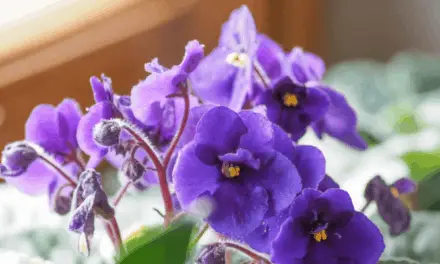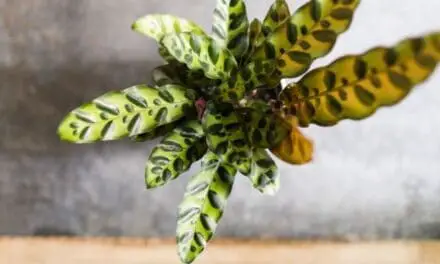The ponytail palm is a gorgeous tree-like succulent that isn’t a palm at all.
This plant has an amazing wide trunk that resembles an elephant’s foot.
It uses this trunk to store water for when there are times of drought.
If you overwater your ponytail palm, its trunk can absorb too much water and it will go soft.
This is one of the first signs of trouble and what you do from here will determine the fate of your plant.
Table of Contents
Why Is My Ponytail Palm Trunk Soft?

Your ponytail palm’s trunk is soft because it hasn’t been allowed to properly dry out between watering times and it has absorbed too much water.
Either it is being watered too often, its soil is too clayey and holding onto too much water, or its pot does not have enough drainage so the roots are not being allowed to dry between watering times.
What To Do If Your Ponytail Palm Has A Soft Trunk
If your ponytail palm’s trunk is soft, it will need to dry out.
Depending on how consistently wet it has been, it may also need to be repotted.
Inspect The Roots
First, inspect your ponytail palm and check for any dark brown spots on the leaves or mushy brown tips on the ends of leaves.
These are indications of root rot.
Next, gently lift your plant from its pot and inspect the roots for rot.
It’s important to check for root rot because if it’s allowed to spread your plant will surely die.
Related Article: Why Is My Ponytail Palm Turning Purple? (And What To Do)
If The Roots Are Healthy
If you inspected the roots and they all look healthy then you may have caught the watering issue very early on and avoided any damage to your plant.
If the soil doesn’t feel too wet and your pot has drainage holes, you can pop your ponytail palm back in and allow it to dry out fully before you water it again.
You probably just watered it a little bit too often and it reacted by absorbing too much water and developing a soft trunk.
To stop this from happening again, only water your ponytail palm when the top two inches of soil has completely dried out and make sure the pot has good drainage.
If The Roots Have Completely Rotted
If the entire root structure and even the trunk appear to be rotting, then it’s probably too late to save your ponytail palm.
You’re probably best to throw this one out.
If There Is Some Root Rot
It’s a judgment call, but if there are only a few rotten roots your plant has a chance of survival.
Take a clean knife or scissors and remove any routes that don’t look completely healthy.
Remove even questionable roots; cut off any roots that look discolored and leave behind only healthy-looking roots.
Rinse The Remaining Healthy Roots
Once all the rot has been removed, give the remaining healthy roots a good rinse with fresh lukewarm water to remove as many harmful bacteria as possible.
Let The Roots Air Dry
Because the harmful bacteria that cause root rot thrive in damp, air-deprived environments, lots of exposure to air will help your ponytail palm to recover.
Allowing the roots to air dry for about 24-hours will help to kill off even more harmful bacteria and help the freshly cut roots callus over.
Keep an eye on the roots as they dry out and if you think they are becoming a bit too dry, you can wrap them in a moist paper towel for a while.
Repotting Your Overwatered Ponytail Palm
After about 24-hours of air drying, it’s time to repot your palm into fresh soil.
Take one more look at the root structure and if it seems quite root-bound and all compacted together you can loosen it up a bit with your fingers.
Choose A Suitable Pot
If your ponytail palm was rootbound you should probably choose a deep pot that has good drainage and is one or two inches wider than the old one.
If your plant was not root-bound you can probably go with the same pot or one the same size, as long as it is deep and has good drainage.
You’ll want the pot to be deep to allow for your ponytail palm’s vigorous root system.
But don’t use a pot that is more than two inches bigger than your old one because the soil will take longer to dry out and you will end up with more watering problems.
Use The Right Type Of Soil
The soil you use for your ponytail palm needs to be airy and fast-draining.
It needs to be a quality desert soil mixture; something like two parts succulent soil mix and one part pumice or perlite will work well.
The pumice or perlite will help to improve drainage and stop your ponytail palm’s trunk from absorbing too much water and getting soft.
Fill The Pot
Ensure your pot has one or more drainage holes before you put any soil into it.
Some people choose to put something over the drainage hole before they fill up the pot, just so that the hole doesn’t get clogged with soil.
Something like a curved sliver of a stone will work well (as long as it’s not something that’s going to block the drainage hole itself).
Next, you can start adding the soil mix into the pot.
Get Your Plant To The Right Height
Once you’ve added some soil, pop your ponytail palm in just to test the level that it sits at in the pot.
Add more soil or take some away until you’re happy with the height your plant is sitting at.
When you get the level right, your plant should sit at roughly the same height it used to in its old pot.
Fill In The Sides
When you’re happy with the level you can center your plant and start filling in around the sides.
As you keep filling in the soil around the sides, keep pressing it down to get rid of any air pockets and to ensure that there is lots of soil around the roots.
Give Water
Once the pot is all filled in you can give your plant a deep watering (until water is seeping out of the drainage holes) and then let the top two inches of soil completely dry out before you water it again.
Hopefully, your ponytail palm will like its new home and make a full recovery.
How To Prevent Your Ponytail Palm From Developing A Soft Trunk
If your ponytail palm has developed a soft trunk it is because of a watering issue that usually stems from one of three things:
- It is being watered too regularly.
- The soil is unsuitable and holding onto too much water.
- The pot has poor drainage and is keeping the soil too wet.
Water It Properly
Your ponytail palm does not like to be watered too regularly.
This plant holds onto water in its thick trunk so even if the soil in the pot completely dries out, it still has access to the stored water in its trunk to distribute to its foliage.
You should allow its soil to almost completely dry out between watering times.
Test the top couple of inches of soil with your finger and if you feel any moisture hold off on watering for another day or two.
Use A Fast-Draining Desert Soil Mix
Your ponytail palm needs to be planted in a fast-draining succulent soil mix.
If the soil is too clayey, holding onto too much moisture and not allowing the roots to dry out between waterings, the trunk may store too much moisture and become soft.
Provide Good Drainage
You should ensure that your plant’s pot has good drainage and that the water is allowed to drain away without standing in the bottom of the pot.
If your ponytail palm is allowed to sit in water for prolonged periods, its trunk will go soft and before long it will begin to rot.
Don’t Pour Water Over The Trunk Of Your Ponytail Palm
Be careful not to pour water over the trunk of your palm when you are watering from the top.
It really doesn’t like that and if water begins to build up around the base of the trunk, it will start to rot along with any roots near the surface.
Final Thoughts
Ponytail palms are an easy plant to care for, as long as you take the approach that less is more when it comes to watering.
If you notice that its trunk has become soft – it’s a sure sign of too much water and you should immediately inspect the plant for signs of overwatering (dark brown spots and brown mushy tips on leaves).
And if you catch it early enough, you’ll only have to let the plant dry out in order to revive it.




